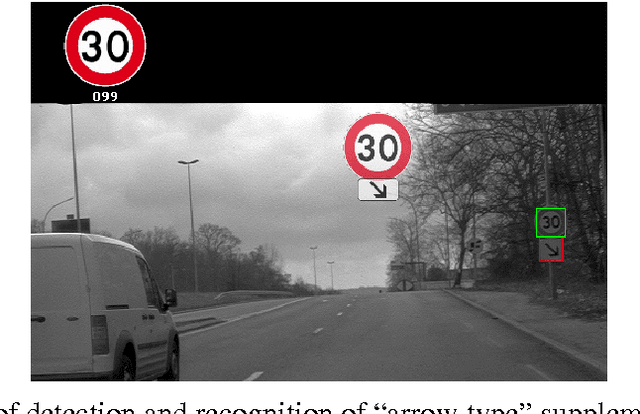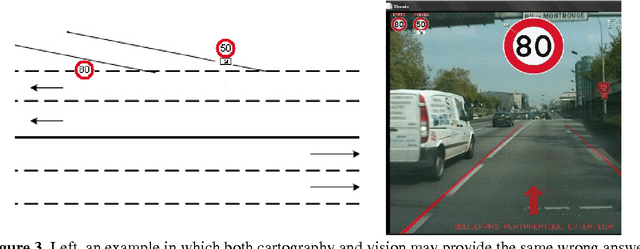Alexandre Bargeton
CAOR
Joint interpretation of on-board vision and static GPS cartography for determination of correct speed limit
Oct 19, 2010



Abstract:We present here a first prototype of a "Speed Limit Support" Advance Driving Assistance System (ADAS) producing permanent reliable information on the current speed limit applicable to the vehicle. Such a module can be used either for information of the driver, or could even serve for automatic setting of the maximum speed of a smart Adaptive Cruise Control (ACC). Our system is based on a joint interpretation of cartographic information (for static reference information) with on-board vision, used for traffic sign detection and recognition (including supplementary sub-signs) and visual road lines localization (for detection of lane changes). The visual traffic sign detection part is quite robust (90% global correct detection and recognition for main speed signs, and 80% for exit-lane sub-signs detection). Our approach for joint interpretation with cartography is original, and logic-based rather than probability-based, which allows correct behaviour even in cases, which do happen, when both vision and cartography may provide the same erroneous information.
Modular Traffic Sign Recognition applied to on-vehicle real-time visual detection of American and European speed limit signs
Oct 07, 2009



Abstract:We present a new modular traffic signs recognition system, successfully applied to both American and European speed limit signs. Our sign detection step is based only on shape-detection (rectangles or circles). This enables it to work on grayscale images, contrary to most European competitors, which eases robustness to illumination conditions (notably night operation). Speed sign candidates are classified (or rejected) by segmenting potential digits inside them (which is rather original and has several advantages), and then applying a neural digit recognition. The global detection rate is ~90% for both (standard) U.S. and E.U. speed signs, with a misclassification rate <1%, and no validated false alarm in >150 minutes of video. The system processes in real-time ~20 frames/s on a standard high-end laptop.
 Add to Chrome
Add to Chrome Add to Firefox
Add to Firefox Add to Edge
Add to Edge